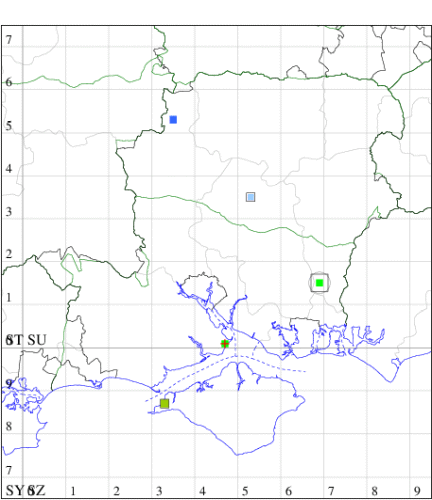Tinea dubiella
Checklist Number12.028 [B&F: 0243]
Verification
Record requires retention of specimen until confirmed, and may require dissection. Consult with CMR if unsure
Nationally scarce (Na) in Britain, north to Argyll, once common, but has declined rapidly in recent years. Almost entirely overlooked until 1979, when about half the Case-bearing Clothes Moth T. pellionella in British collections were reidentified as T. dubiella. In Hampshire there are just a handful of records, and the species has not been recorded on the Isle of Wight to date. Wingspan 9-15 mm. Flies in late afternoon, probably in two generations and frequents interior of houses, bird nests, barns, warehouses and granaries. Larva feeds on woollen materials, fur, feathers, hair, owl pellets, detritus in bird nests and stored goods, living within a silken case, causing sufficient damage to be a serious pest in some areas.


The abundance in each month is indicated as follows:
 No records
No records Very occasional
Very occasional Irregular
Irregular Uncommon
Uncommon Off-peak, but not unusual
Off-peak, but not unusual Off-peak, but not unusual
Off-peak, but not unusual Main flight time
Main flight time| J | F | M | A | M | J | J | A | S | O | N | D | |
|---|---|---|---|---|---|---|---|---|---|---|---|---|
| Adult |  |  |  |  |  |  |  |  |  |  |  |  |
| Larval |  |  |  |  |  |  |  |  |  |  |  |  |
Records by week (adult)
Records by week (larval)
VC10 Isle of Wight
| Site | Date | Quantity | Recorder | Stage |
|---|---|---|---|---|
| Freshwater (SZ38) | 10/08/2017 | one | Dave Cooke | Adult |
VC11 South Hampshire
| Site | Date | Quantity | Recorder | Stage |
|---|---|---|---|---|
| Stanswood Valley (SU40) | 01/05/2005 | - | Brian Elliott | Larval |
| Waterlooville (SU61) | 23/07/2005 | one | Richard J Moore | Adult |
| Waterlooville (SU61) | 06/06/2006 | one | Richard J Moore | Adult |
| Waterlooville (SU61) | 07/07/2006 | one | Richard J Moore | Adult |
VC12 North Hampshire
| Site | Date | Quantity | Recorder | Stage |
|---|---|---|---|---|
| Itchen Wood (SU53) | 09/07/1966 | one | D W H Ffennell | Adult |
| Wildhern (SU35) | 29/09/1996 | - | David G Green | Adult |